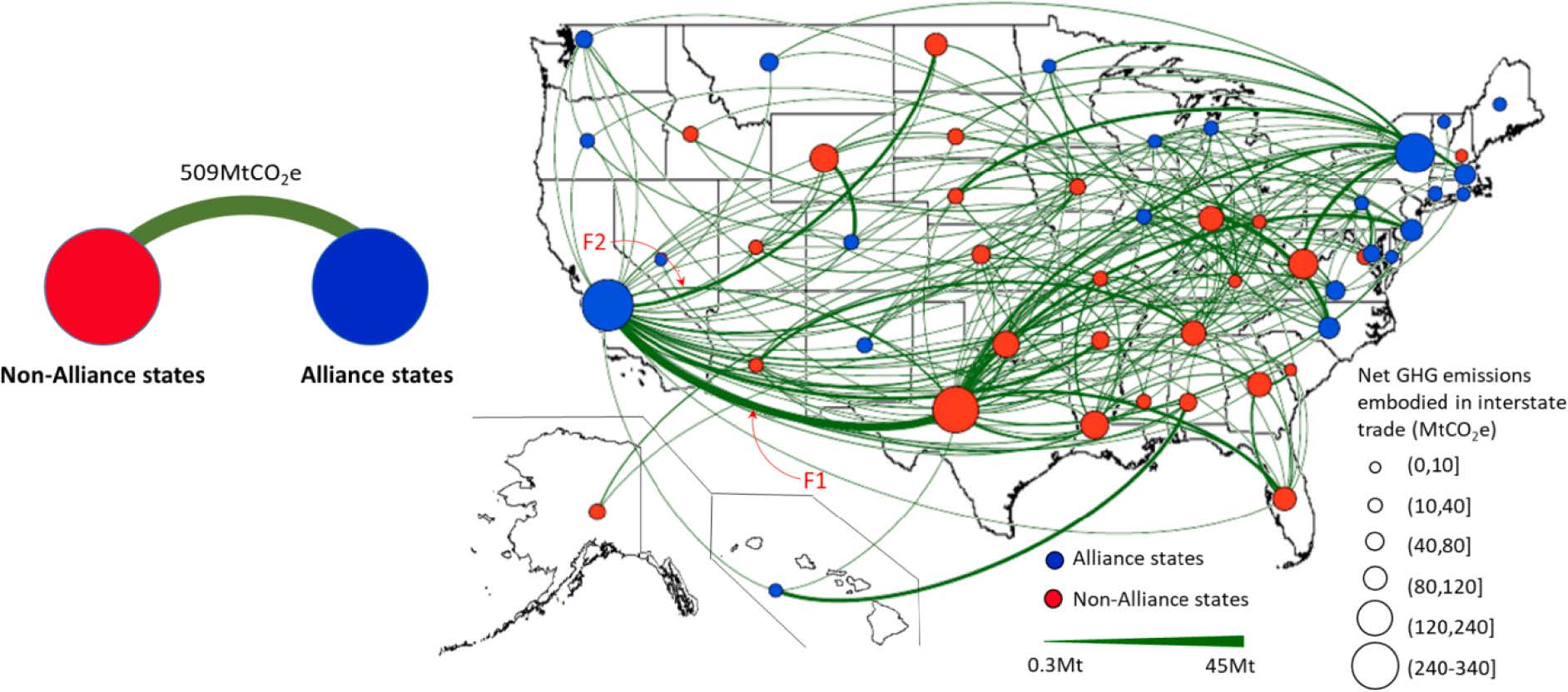Subnational actors can provide important contributions to broader climate actions. A consistent and accurate quantification of their greenhouse gas (GHG) emissions is an important prerequisite for the success of such efforts. However, emissions embodied in domestic and international supply chains, which may undermine the effectiveness of climate agreements, add challenges to the quantification of emissions originating from the consumption of goods and services produced elsewhere.
In a new paper published to high-impact journal Global Environmental Change (IF = 11.16), GEOG former Ph.D. student Kaihui Song, Professors Giovanni Baiocchi, Kuishuang Feng, and Laixiang Sun, in collaboration with former GEOG Professor Klaus Hubacek, Professor Dabo Guan, and Dr. Daoping Wang examine emission transfers between states that have joined the U.S. Climate Alliance (USCA) and states that have not.
The results of the research show that states pledging to curb emissions consistent with the Paris Agreement were responsible for approximately 40% of total U.S. territorial GHG emissions. However, when accounting for transferred emissions through international and interstate supply chains of the products they consume, the share of Alliance states increased to 52.4% of the national total GHG emissions. The consumption-based emissions for some Alliance states, such as Massachusetts and New York, could be more than 1.5 times higher than their production-based emissions.
This research also highlights the challenges facing such agreements to extend cooperation in the future for larger joint benefits given the potential for carbon leakage from member states implementing stricter environmental policies that could lead to higher emissions from non-member states. It is critical for these arrangements to pay close attention to transferred emissions.
Figure shows virtual GHG emission flows within the U.S. Circle size represents net GHG emissions embodied in interstate trade, with Alliance states coded with blue and non-Alliance states coded with red. Width of green-colored flows shows amount of virtual GHG emission flows between states.


